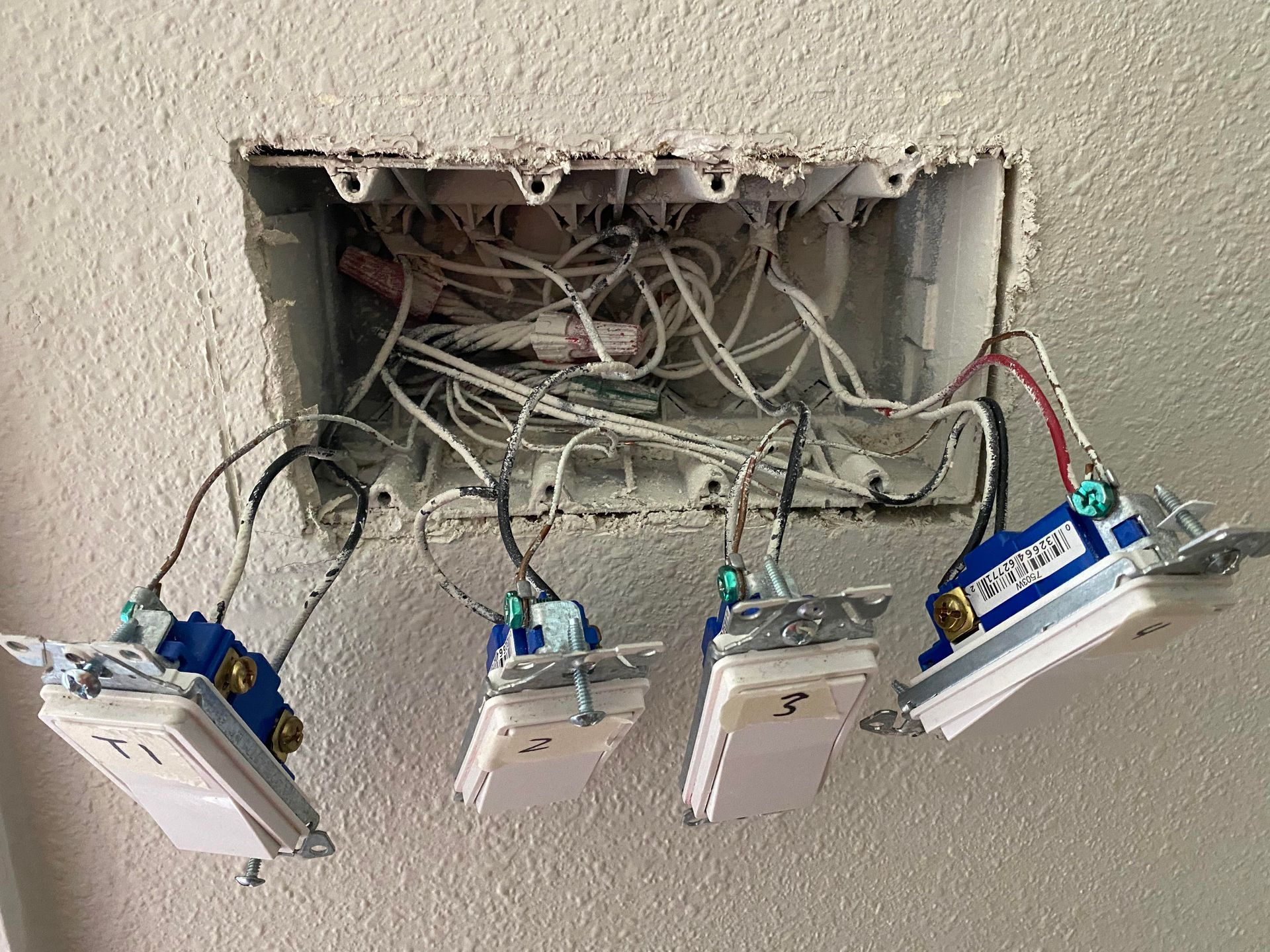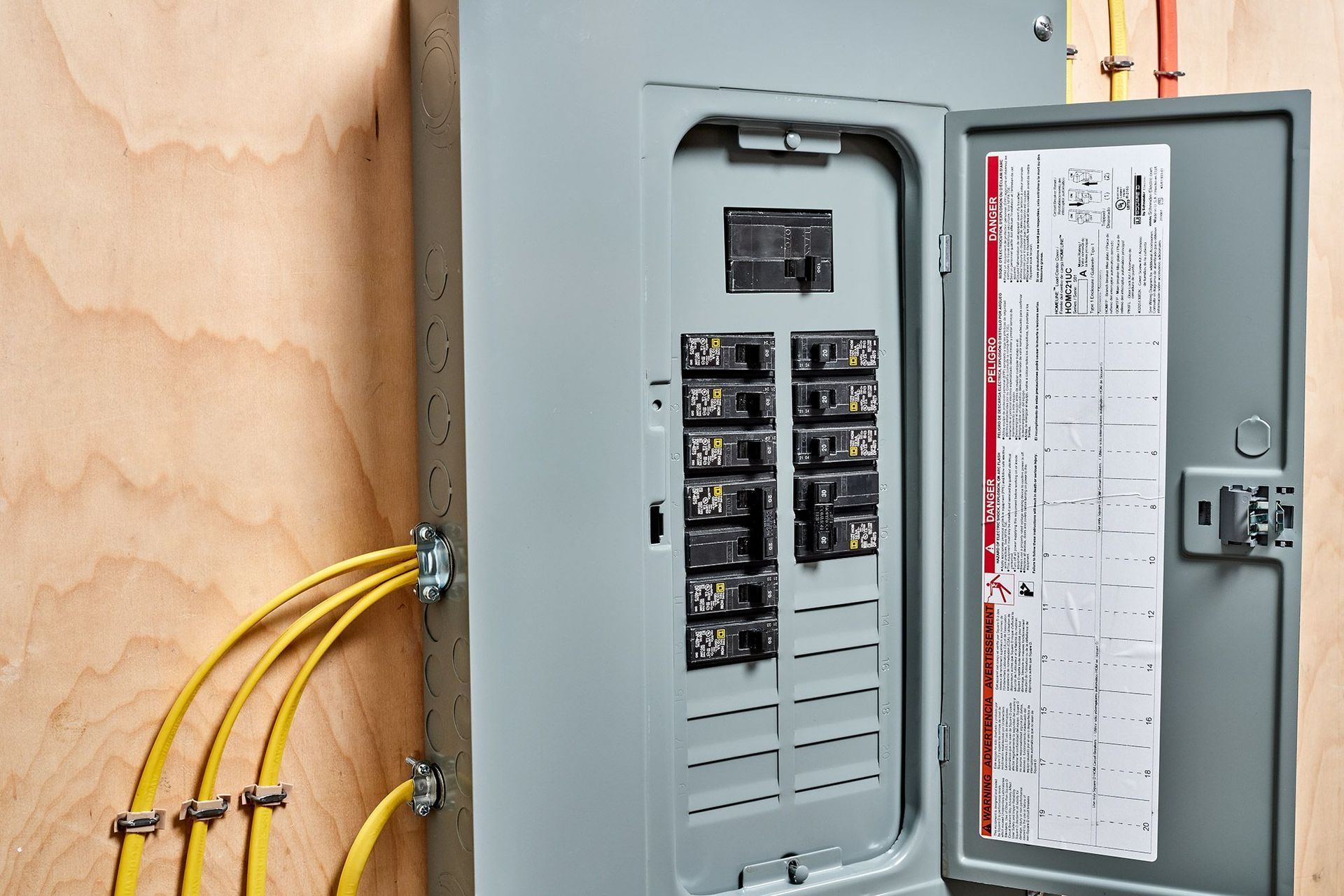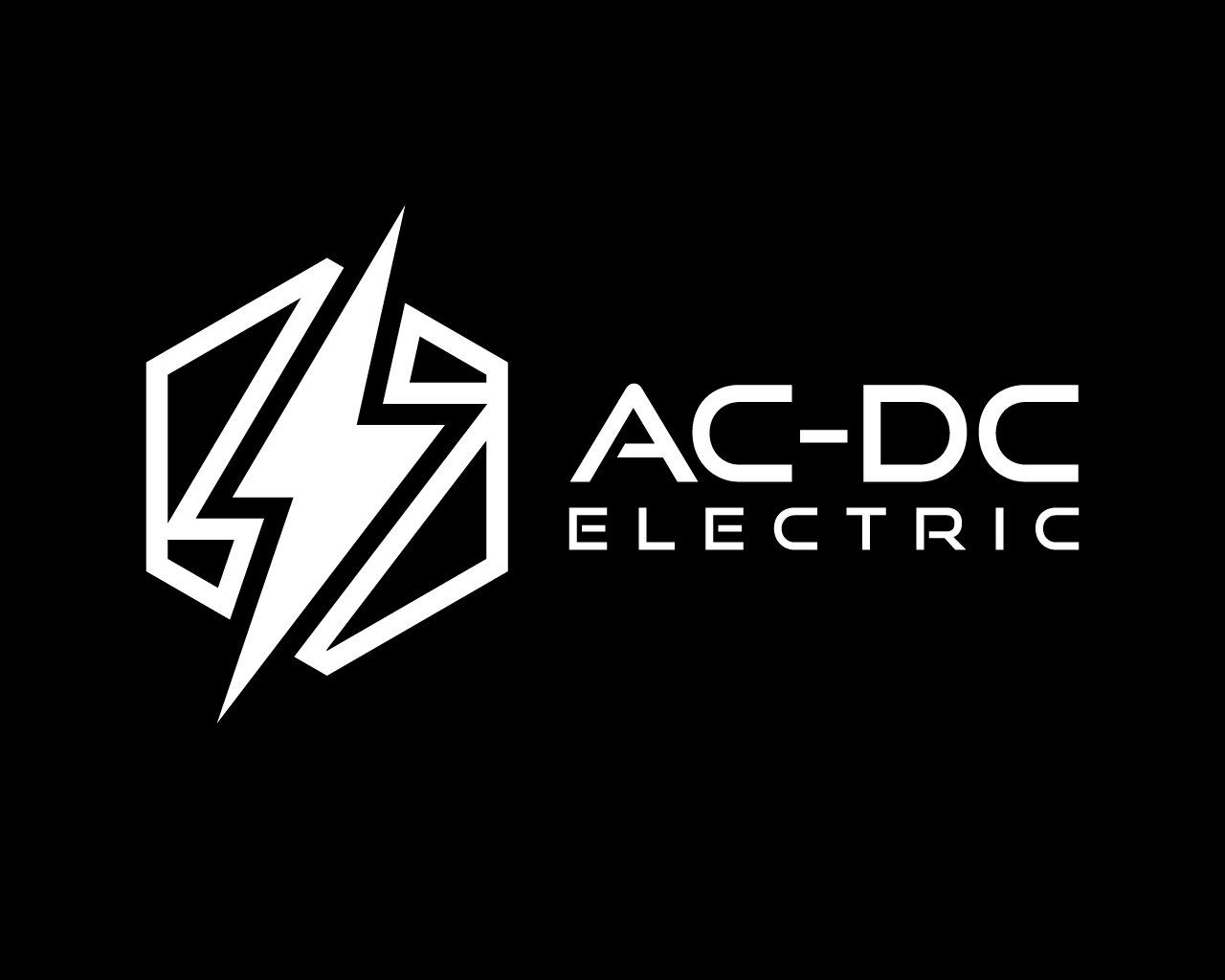What is Electrical Grounding & Why it’s Important? (UPDATED)
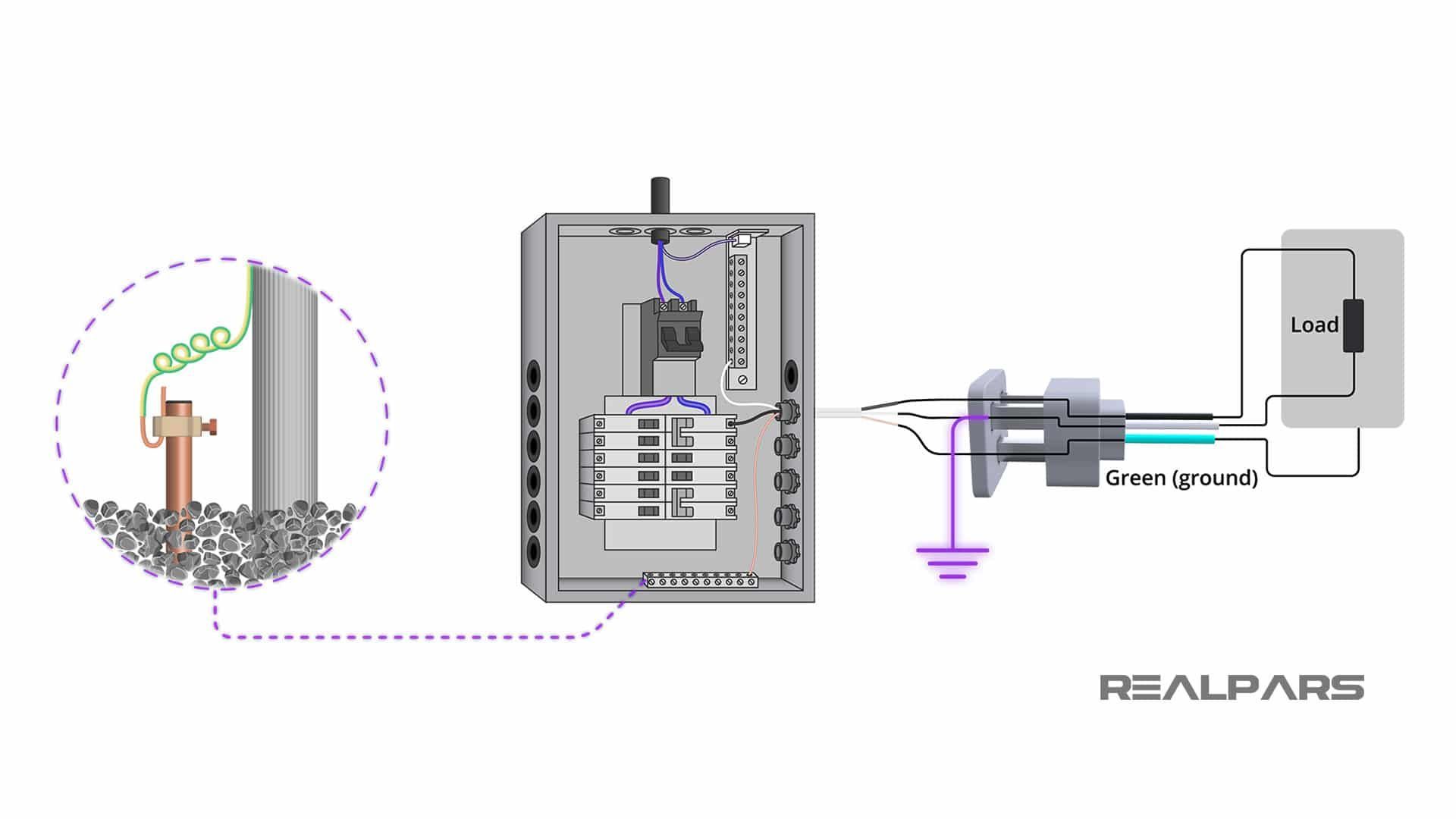
Electrical grounding is an important aspect of electrical safety, and it plays a key role in protecting individuals and equipment from electrical hazards. But what exactly is electrical grounding? In essence, it is the process of connecting an electrical system to the earth to create a safe and reliable pathway for electrical current. The importance of grounding cannot be overstated, as it helps to prevent electric shock, reduce the risk of fire, and prevent damage to sensitive electronic equipment.
By creating a low-resistance path for electrical currents to flow back to the earth, grounding helps to ensure that electricity is safely discharged, rather than building up and causing harm. Whether you are an electrician, a homeowner, or anyone else who works with electrical systems, understanding what electrical grounding is and why it is important can help you create a safer and more reliable environment for yourself and others.
How Does Electrical Grounding Work?
Electrical grounding is an essential part of every electrical system, yet many people don't know how it works. It involves connecting a conducting object, like a copper wire or metal rod, from the electrical panel to the earth's surface, which serves as a "ground." A grounding system provides a low-resistance path from a circuit to the earth, making sure that excess electrical current doesn't flow through the circuits and devices, which could lead to electrical shock or fire hazards. Grounding also helps limit electrical interference or "noise," which can compromise the quality of electronic signals. With proper grounding, electrical systems can operate efficiently and safely, giving you peace of mind knowing that your home or business is protected from any electrical issues.
Why is Electrical Grounding Important?
Electrical grounding is an important safety measure in any electrical system. Simply put, it is a method of providing a low-resistance path for electrical current to flow to the earth. But why is electrical grounding important? The most critical reason is safety. Grounding helps protect the system from electrical shock, fires, and other hazards such as electrostatic discharge (ESD). When electrical appliances and devices are grounded, excess electrical energy flows through the grounding wire instead of passing through people or objects. Additionally, grounding can improve the performance and reliability of the system by reducing noise and interference from surrounding electrical sources. Therefore, proper electrical grounding in any electrical system is essential to ensure safety and maximum efficiency.
What is Grounding in Electricity?
Grounding is the process of connecting a conductor or an electrical device to the earth, effectively providing a safe and stable path for excess electricity to escape. This reduces the risk of electrical shock, electrocution, and fires caused by unexpected voltage spikes or short circuits. A proper grounding system can help protect individuals and equipment from harm, making it an essential aspect of electrical safety. In order to achieve effective grounding, it is important to understand the principles behind it, including the properties of electrical current and the behavior of the earth as a conductor. By properly implementing grounding techniques, we can ensure the responsible and safe use of electricity in a variety of settings.
Ground in electrical refers to the physical connection of a piece of equipment to the earth. It is an essential aspect of electrical systems as it provides safety and stability to the entire electrical network. The ground wire creates a direct path for excess electrical current to flow to the earth instead of through the electrical device or equipment. This grounding system protects people and equipment from electric shock, lightning strikes and electrical noise. Grounding also ensures that any faults in the electrical system tripping a protective device and prevent the potential spread of electrical dangers. In essence, grounding is a crucial aspect of electrical systems and an indispensable safety measure.
How To Ground Yourself Electrically?
When it comes to electrical safety, grounding yourself is an essential practice that can protect you from electric shock, burns, and other hazardous electrical hazards. But how exactly do you ground yourself electrically? First and foremost, start by identifying the electrical equipment you will be working with, such as a power supply or electrical panel. Then, ensure that your hands and tools are dry and free of any moisture before handling them. Next, establish a reliable ground connection by using a grounding rod or wire with a resistance of less than one ohm. Make sure to test the connection for continuity before proceeding with any electrical work. By following these simple steps, you can safely and effectively ground yourself electrically, preventing the likelihood of any potential accidents or injuries. Remember, electrical safety should always be a top priority!
Grounding an electrical panel is crucial to ensure the safety of the entire electrical system. Without proper grounding, electrical surges and faults could lead to hazardous situations, such as electric shock or even electrical fires. Grounding can also prevent damage to sensitive electronic equipment and appliances. It's important to follow the National Electric Code (NEC) guidelines for grounding an electrical panel, which includes using the proper size and type of grounding conductor, connecting it to the grounding electrode system, and testing the grounding system regularly. By taking these safety measures, you can protect yourself and your property from potential electrical hazards.
What signs might indicate that your home's wiring system is outdated or lacks grounding?
What Signs Might Indicate That Your Home's Wiring System Is Outdated or Lacks Grounding?
Recognizing whether your home's electrical wiring is properly grounded is crucial for safety. One common indicator of an older or ungrounded system is the presence of outlets with only two slots, instead of the modern three-prong design that includes a ground connection.
Additionally, you might notice a lack of grounding wires in your electrical panel or within outlet boxes, especially if your home was built before updated electrical codes mandated grounding.
Other warning signs can include:
Outlets that feel warm to the touch or show signs of discoloration.
Frequent tripping of circuit breakers or blowing of fuses.
A noticeable tingling sensation when touching electrical appliances.
Unusual buzzing or crackling sounds coming from outlets or switches.
If you observe any of these conditions, it's wise to have a qualified electrician perform a thorough inspection to ensure your home’s electrical system is both safe and up to code. This proactive step helps safeguard people and property from electrical hazards.
What are the differences in grounding systems between modern and older homes?
Modern vs. Older Home Grounding Systems
The approach to grounding in home electrical systems has evolved significantly over the years. In most modern homes, you’ll find a dedicated copper grounding wire as part of the circuit breaker system, typically using sheathed NM (non-metallic) cable.
This ensures a consistent and reliable path to ground, enhancing overall electrical safety and supporting today’s sensitive electronics.
In contrast, homes built from the 1940s to the mid-1960s may rely on grounding through metal conduit or armored cable instead of a separate copper wire.
These older methods use the metal casing itself to channel stray current safely into the ground. And if your home predates the 1940s, it’s possible there is no grounding at all—a serious concern when it comes to protecting against shocks and power surges.
If you’re uncertain about your home’s wiring, take a quick look at the outlets. Two-pronged outlets are often a giveaway that proper grounding may not be present.
For peace of mind and safety, it’s always wise to have a licensed professional evaluate and update outdated grounding systems if needed.
What Is the difference between grounding and earthing in electrical systems?
While the terms "grounding" and "earthing" are often used interchangeably, they do have subtle differences depending on geographic and technical context.
In many cases, "earthing" refers specifically to the connection of electrical installations directly to the physical mass of the earth—think of a metal rod or plate embedded in the ground outside a home or building.
This provides a direct, safe path for any fault currents to dissipate harmlessly into the soil, offering protection against electrical shock.
On the other hand, "grounding" typically describes creating a reference point within an electrical system, usually linked to the neutral point of a power supply.
Grounding helps manage excess current by providing an alternative route back to the source in the event of a fault, reducing the risk of damage or injury.
In North American terminology, "ground" and "neutral" often coexist in household wiring to support both safety and system stability.
In summary:
Earthing: Physical connection to the ground (earth itself), mainly for safety during faults.
Grounding: Establishes a zero-voltage reference point within electrical circuits, managing current flow during irregularities.
Understanding the distinction helps ensure electrical systems remain both safe and reliable, no matter where or how they're used.
What to do If your home has two-slot outlets but You want to use three-prong devices?
What to Do If Your Home Has Two-Slot Outlets but You Need to Use Three-Prong Devices
Living in an older home with two-slot outlets can be frustrating—especially when most modern devices require a three-prong connection for grounding and safety.
It may seem tempting to grab a plug adapter to fit your three-prong cord into a two-slot outlet, but this is generally not the safest solution. Unless the adapter is correctly attached to a grounded metal electrical box, it will not provide any real protection and could put you at risk for electrical shock.
The recommended solution is to have a licensed electrician upgrade your outlets to properly grounded three-slot versions. This upgrade not only makes your outlets compatible with modern devices but also brings your home up to current electrical safety standards.
If rewiring isn't possible right away, you have some interim safety options:
Ground Fault Circuit Interrupter (GFCI) Outlets: Installing a GFCI outlet in place of your two-slot outlet can add a layer of protection.
While this doesn’t provide true grounding, a GFCI will quickly turn off power if it detects any ground fault or stray current, reducing the risk of shock.
Double-Insulated Devices: Many devices with two-prong plugs are designed with double insulation to keep you safe even without a ground connection. Always check that your equipment is safe for use in an ungrounded outlet before plugging it in.
Avoid Using Adapters: Three-prong-to-two-slot adapters provide little to no real protection unless properly grounded and installed in a grounded metal box, so it’s best to skip them altogether.
Consulting a professional electrician is always the safest bet. Upgrading your home's electrical system may seem like an investment, but it significantly improves both safety and functionality in the long term.
Why might some older homes lack proper grounding?
If you live in an older home, there’s a chance your electrical system might not have the modern grounding safeguards found in newer constructions. This is largely due to changes in electrical codes and materials over time.
Homes built before the late 1960s often relied on methods like metal conduit or armored cable as a grounding path, and houses built before the 1940s may not have included grounding at all. As building standards evolved, the industry shifted to using dedicated copper grounding wires with three-prong outlets—features not always present in earlier systems.
A simple way to spot an outdated or possibly ungrounded system is by looking at your outlets. If you notice outlets with only two vertical slots (without a third, round hole for grounding), it could indicate that your wiring pre-dates grounding requirements.
While many older homes have been updated to meet safety standards, it's always wise to check—especially if electrical renovations haven't been documented. Upgrading your system not only boosts safety but also ensures compatibility with today’s sensitive electronics.
Does installing a GFCI outlet create a grounding pathway?
Does a GFCI Outlet Provide a Grounding Pathway?
It's a common misconception that installing a GFCI outlet in an older home automatically creates a true ground for your electrical system. In reality, a GFCI (Ground Fault Circuit Interrupter) outlet increases safety by detecting ground faults—shutting off power if it senses an imbalance in the electrical current.
This can help protect you from electric shock, even if the outlet itself isn't grounded.
However, it's important to understand that a GFCI outlet does not establish a physical grounding pathway. While it does make ungrounded outlets safer by offering protection from fatal shocks, it does not provide the same level of protection against electrical surges or help safeguard sensitive electronics. If proper grounding isn't possible due to old wiring, a GFCI can be a valuable upgrade, but it should never be considered a replacement for a dedicated ground wire.
Always label GFCI-protected ungrounded outlets to inform future users of their status.
How are metal plumbing pipes protected by grounding in a home?
In many homes, metal plumbing pipes are made part of the grounding system to enhance electrical safety. Typically, a grounding wire is securely attached—using an approved ground clamp—to a metal water pipe.
This connection is usually made near the point where your main water line enters the house or close to your water heater. By establishing this direct link, any stray electrical current is safely carried away into the earth through the grounded piping, rather than traveling through fixtures or appliances.
This helps safeguard both people and property from electric shocks and minimizes the risk of electrical fires, making your home’s plumbing system an additional line of defense within the overall grounding network.
How do GFCI (ground-fault- circuit- interruter) outles provide some protection in ungrounded systems?
How GFCI Outlets Enhance Safety in Ungrounded Systems
If you’re dealing with an older home that doesn’t have grounded outlets, you might wonder if there’s any way to boost safety without rewiring the entire system. This is where Ground Fault Circuit Interrupter (GFCI) outlets come in handy. While a GFCI outlet doesn’t provide a true grounding connection, it does offer a valuable layer of protection.
GFCI outlets work by constantly monitoring the flow of electricity through the circuit. If the outlet detects even a minor difference between the electricity leaving and returning—often a sign of a ground fault or stray current—it will rapidly cut off power to that outlet.
This quick response can prevent electrical shock and reduce the risk of injury, making ungrounded outlets considerably safer for everyday use.
Keep in mind, though, that while GFCIs help mitigate shock hazards in ungrounded systems, they don’t create a full grounding path or eliminate all electrical risks. For maximum protection, always label GFCI-protected ungrounded outlets as “No Equipment Ground” to keep users informed and safe.
Is it safe to cut off the grounding prong from an appliance's plug?
Absolutely not—removing the grounding prong from an appliance’s plug is never a safe solution.
The grounding prong is there for a crucial reason: it provides a direct path for electrical faults to safely reach the ground. If you cut off the prong just to fit a two-prong outlet, you eliminate this essential protection.
As a result, any internal short circuits or wiring issues could expose you or your family to a serious risk of electric shock or even fire.
If you encounter a plug that doesn’t fit your outlet, don’t try to modify it. Instead, either replace the non-grounded outlet with a proper three-slot version (ideally grounded to code) or use a certified adapter, but only when the outlet itself is properly grounded.
When in doubt, always consult a licensed electrician. Taking shortcuts with grounding is one of the most dangerous mistakes you can make in household electrical safety.
What safety devices are built into home wiring systems to minimixe electrical risks?
What Safety Devices Are Built Into Home Wiring Systems?
Modern home wiring systems are designed with several built-in safety features to protect both people and property from electrical risks.
Chief among these are circuit breakers and fuses. Circuit breakers are electrical switches that automatically shut off the flow of electricity when a circuit becomes overloaded or a short circuit occurs. By doing so, they prevent wires from overheating and reduce the risk of electrical fires.
Fuses work in a similar manner by "blowing" or melting when excess current passes through, thereby breaking the circuit and stopping the flow of electricity.
Another layer of protection comes from the metal plumbing pipes in your home, which are often incorporated into the grounding system.
These pipes are typically secured with a grounding wire clamped near the water heater or at the main water line entry point.
Connecting metal pipes to the grounding pathway ensures any stray voltage safely dissipates into the earth, further minimizing the risk of electric shock or damage to appliances.
By integrating these protective devices and grounding measures, your home electrical system can defend against unexpected faults—helping ensure safe and reliable operation day in and day out.
How do plug adapters for three prong plugs work, and are they safe to use?
Plug Adapters for Three-Prong Plugs: Function and Safety Considerations
Plug adapters, often referred to as "cheater plugs," are commonly used to connect three-prong appliances to older two-slot outlets that lack a dedicated ground slot.
These adapters feature a metal tab or wire designed to make contact with the outlet's faceplate screw, which, in theory, connects to the grounding system through the metal outlet box—provided the box itself is properly grounded. However, many older homes may not have this vital ground connection in place.
Because the safety ground relies entirely on the connection between the faceplate screw, the metal box, and an established ground path, these adapters do not always provide reliable protection. If any component in this chain is missing or improperly installed, the device is effectively ungrounded—leaving you at risk for electric shock or equipment damage.
For this reason, it's far safer to use three-prong plugs only with properly grounded three-slot outlets.
Whenever you encounter a situation where you need grounding but only have a two-slot outlet, it’s best to consult a licensed electrician or upgrade the outlet system rather than relying on an adapter that may give a false sense of security.
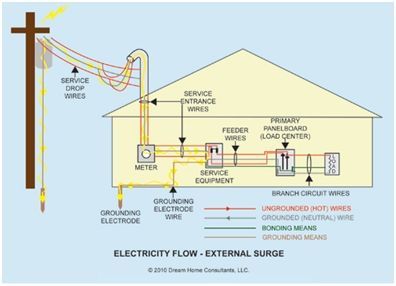
An electric panel ground bar plays an essential role in electrical safety. It provides a secure connection between electrical equipment and the earth's surface, preventing electrical shocks and fires. As a professional electrician or DIY enthusiast, it's crucial to have a clear understanding of theimportanceof the ground bar and how to install it correctly. Failure to do so can lead to a host of electrical hazards that can be costly and even life-threatening. By being knowledgeable about the electric panel ground bar and its function, you can ensure that your electrical system remains safe and reliable.
How to Ground an Electrical Outlet
Ensuring that electrical outlets are correctly grounded is a critical aspect of electrical safety. If an electrical outlet is not grounded, it can pose a serious risk of electrical shock or even a fire. Understanding how to ground an electrical outlet can help prevent these hazards, and it's essential to do so correctly. There are several methods of grounding an outlet, including running a dedicated grounding wire to the grounding rod, upgrading to a three-pronged outlet, or using a ground fault circuit interrupter (GFCI) outlet. Each approach requires careful attention to detail to ensure that the outlet functions correctly and safely. Electricians or knowledgeable DIY enthusiasts can perform ground outlet installations, but it's crucial to follow specific safety guidelines to avoid accidents and comply with building codes. By learning how to ground an electrical outlet, you can ensure the safety of yourself and your family.
Running Electrical wire Outside above Ground
Running electrical wire outside above ground can be a complex task that requires careful planning and execution. Whether you're looking to install outdoor lighting, power garden tools, or expand your outdoor entertainment options, it's important to consider the type of wiring and the necessary safety precautions. While it may seem tempting to DIY this project, it is highly recommended that you consult a professional electrician who can ensure that the wiring meets local codes and standards. An expert at AC-DC Electric can also help you choose the right type of wire and conduit for your needs, and make sure that the installation is done safely and efficiently. With the help of a licensed electrician, you can enjoy the benefits of outdoor electricity without putting yourself, your property, or others at risk.
Running Electric to Shed Above Ground
Running electric to a shed above ground can be a complex process that requires proper planning and execution. To achieve the desired outcome, it is important to have a well-designed electrical plan that takes into account the power needs of the shed and the distance to the main power source. Proper grounding and safety precautions also need to be observed during the installation process to prevent electrical hazards and ensure compliance with building codes and regulations. With the help of a professional electrician, you can have peace of mind knowing that your shed has a safe and reliable source of power.
Residential Electrical Grounding & Bonding
Ensuring proper grounding and bonding in a residential electrical system is crucial for minimizing the risk of electrical shock and preventing damage to sensitive electronic equipment. Grounding refers to the connection of the electrical system to the earth, while bonding refers to connecting all metal components of the system to ensure they are at the same electrical potential. Proper grounding and bonding help protect against electrical surges and reduce the risk of fires caused by electrical malfunctions. Without proper grounding and bonding, a home's electrical system can put its occupants and their property at risk. Trusting a qualified electrician to assess and implement proper grounding and bonding techniques is essential in ensuring the safety and longevity of a residential electrical system.
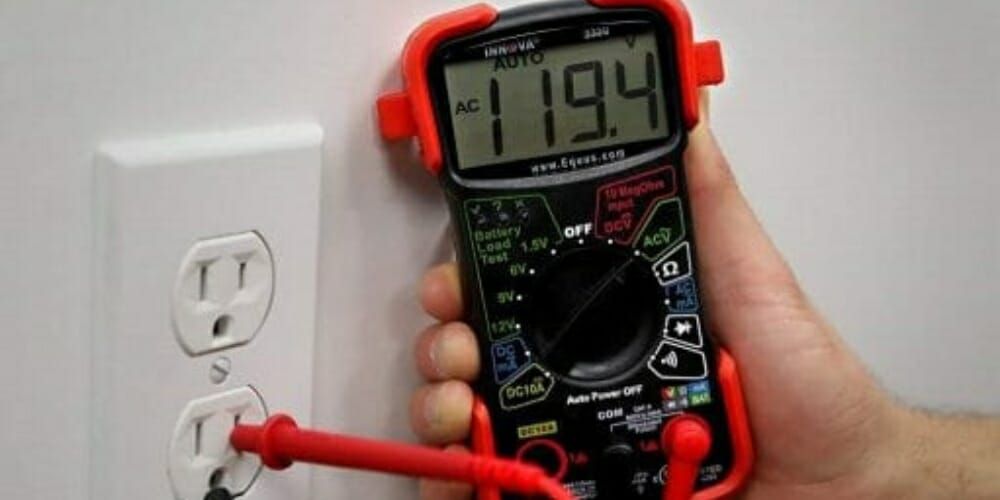
How to Check Electrical Ground with Multimeter
Checking an electrical ground with a multimeter is an important step in ensuring the safety and proper functioning of electrical systems. Grounding is necessary to prevent electric shock and fire hazards, but it can go wrong if not done properly. The good news is that checking electrical ground with a multimeter is a straightforward process that anyone can do. With the right instructions and a little bit of attention, you can easily identify whether the ground is working properly or not. In this article, we will explain the step-by-step process of how to check electrical ground with a multimeter, so you can make sure that your electrical systems are safe and up to code.
Understanding Grounding in Home Wiring
In most modern homes, you can spot evidence of the grounding system right at your outlet receptacles—the third, round slot on the face of the outlet is the grounding connection. When you plug in an appliance with a three-pronged plug, that round grounding prong connects directly to the network of bare copper grounding wires running through your home’s circuits.
However, grounding systems can vary depending on the age of your wiring. Homes wired with modern sheathed NM cable (the familiar plastic-jacketed wiring) and protected by circuit breakers almost always have a dedicated copper grounding wire. But if your home was built or last rewired between 1940 and 1965, the grounding may instead rely on metal conduit or armored cable as the grounding path. In even older homes (pre-1940), there may be no grounding at all.
Tip: If you’re unsure about your home’s wiring, take a look at your outlets. Outlets with only two slots (and no round hole) are a sign that your wiring system likely does not have grounding. Many older homes have been updated, but it’s always smart to double-check before relying on the ground for safety.
With this background in mind, you’ll be better prepared to test your outlets and verify that your grounding system is functioning as it should.
What Type of Electrical Cord has a Ground?
In the world of electricity, safety is of utmost importance. One way to ensure safety is to use electrical cords with a ground. So, what type of electrical cord has a ground? A grounded electrical cord has an additional wire, referred to as the grounding wire, that runs from the plug to the device. This grounding wire is important because it provides an alternate path for the electrical current to flow in case a fault occurs. In other words, if the live wire in the cord comes into contact with a conductive material, the grounding wire will carry the excess current away from the device and into the earth. This added safety feature greatly reduces the risk of electric shock and electrical fires.
In Ground Electrical Junction Box
An integral component of any electrical system, the in-ground electrical junction box ensures safe and reliable power supply. This type of junction box is distinct in that it is designed to withstand the harsh conditions presented by being embedded underground. It features a sturdy and waterproof construction that keeps your electrical connections safe from the elements, while also providing easy access for maintenance when needed. Whether for residential or commercial use, an in-ground electrical junction box is an essential part of any electrical system and should be installed by a professional electrician. So if you're planning to install one, ensure that you get the right kind of box that meets your needs, and be sure to hire an experienced electrician to ensure that your electrical supply remains safe and secure.
Direct Burial in Ground Electrical Junction Box
When it comes to installing electrical wiring for outdoor lighting, security systems, or irrigation systems, a direct burial in-ground electrical junction box is often the best solution to ensure the safety and reliability of the electrical components. This type of junction box is specifically designed to withstand harsh weather conditions and provide a safe enclosure for electrical connections. It is critical to choose the right size and material for the junction box to ensure maximum protection and durability. A professional electrician can help guide you in selecting the appropriate junction box and ensure proper installation for a successful electrical project. With a direct burial in-ground electrical junction box, you can have peace of mind knowing that your electrical connections are well protected against moisture, corrosion, and other environmental factors.
An electrical ground box is a critical component of any electrical system. It ensures the safety of both people and equipment by providing a path to the ground for any stray electrical currents. Without proper grounding, electrical equipment can become hazardous, potentially causing injury or damage to other electrical components. The electrical ground box serves as the central point for grounding the entire electrical system and is designed to handle the high current loads that are common in industrial applications. It is important to choose a high-quality electrical ground box with the right specifications to ensure your electrical system is safe and reliable. With proper installation and maintenance, an electrical ground box can provide years of dependable service.
The Electrical Ground Wire is an essential component of any electrical system, ensuring the safety and reliability of electrical devices and appliances. Not to be confused with the neutral wire, which carries current under normal conditions, the ground wire serves as a safeguard against electrical shocks and equipment damage.
To better understand its role, it helps to know a bit about how your home's wiring works. Electrical current flows through metal wires, typically in two forms: a "hot" wire and a neutral wire. The hot wire, often black, carries the negative charge, while the white neutral wire carries the positive charge. Both types of wires run side-by-side from your utility's main service panel, delivering power throughout your home.
Normally, electricity completes its circuit by returning to the ground through the neutral wire. However, in the event of a fault or an overload—such as when a wire is damaged or a device malfunctions—the ground wire provides a safe, alternate path for excess current. This crucial function helps prevent electrical shocks, fires, and damage to your valuable equipment, offering peace of mind whether you're tackling a DIY project or simply plugging in everyday appliances.
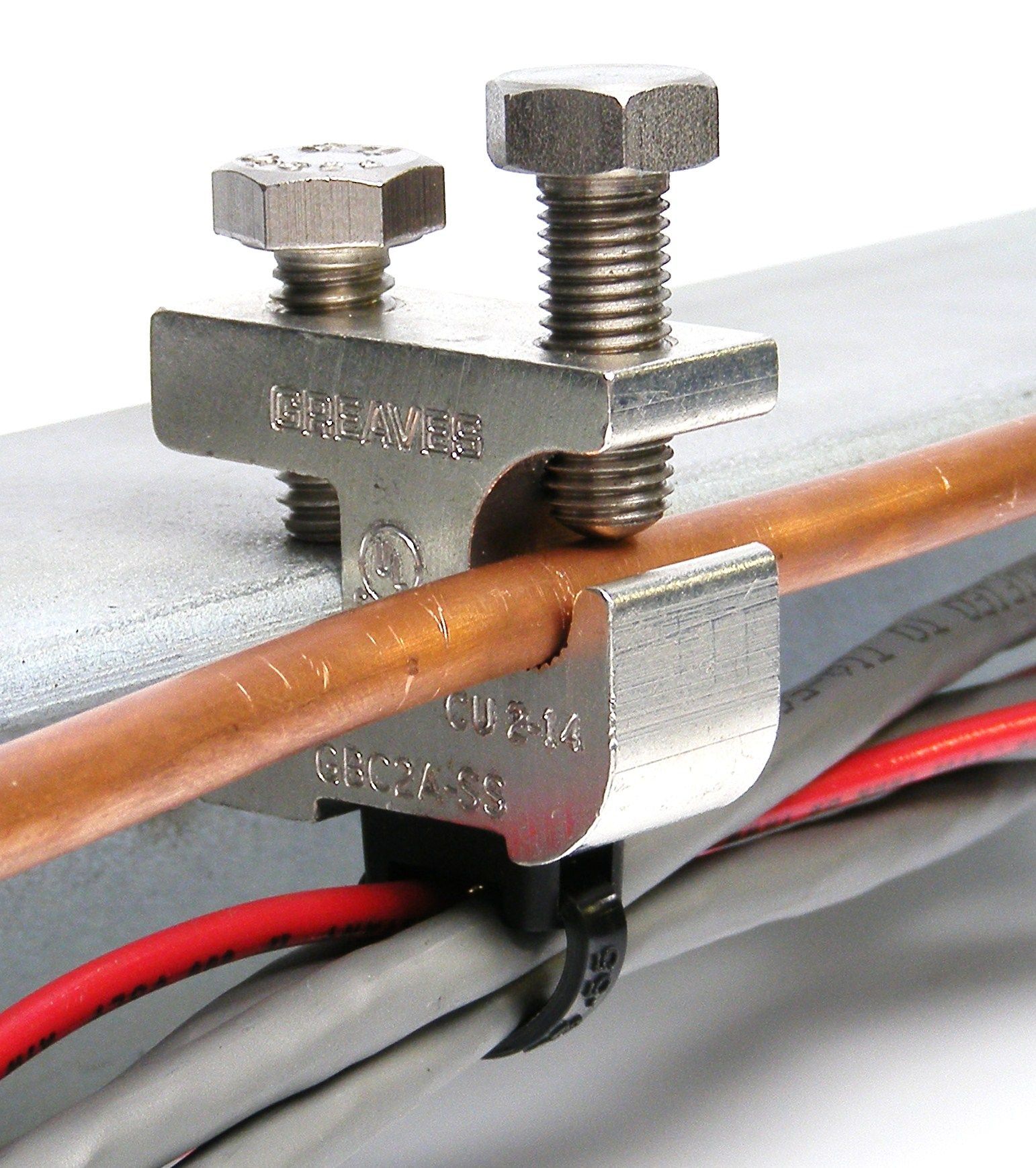
An electrical ground clamp is an indispensable hardware component for safely grounding electrical systems. It provides an effective way to prevent electric shock and burning incidents, which can cause damage to property and injury to personnel. Ground clamps are available in different shapes, sizes, and materials to suit various applications and environments. It is essential to choose the right clamp for your specific needs to ensure proper grounding of electrical equipment. When properly installed, a ground clamp establishes a safe path for electricity to flow to the earth, protecting both people and equipment from dangerous electrical currents. As such, using an electrical ground clamp should be a top priority for any responsible electrician or maintenance technician.
The Electric Ground Symbol is an essential component in any electrical circuit, providing a reference point for the circuit's current flow. This symbol, commonly represented by a downward pointing triangle with a horizontal line, can be found on various electronic equipment and wiring diagrams. When properly connected, the grounding of an electrical system ensures the safety of both people and equipment. The Electric Ground Symbol is a visual reminder of the importance of proper grounding and serves as a critical tool for electricians and electrical engineers in ensuring safe and efficient operation of electrical systems.
An electric ground rod plays a critical role in protecting electrical systems from lightning and other electrical disturbances. It is a vital safety measure for any electrical installation, whether it's for a residential or commercial building. The purpose of the electric ground rod is to redirect excess electrical current from the electrical system to the earth, where it can be safely dissipated. The grounding rod consists of a metal rod, usually made of copper or galvanized steel, that is buried into the ground and connected to the grounding conductor of an electrical system. This helps to prevent electrical fires and other hazards, and ensures that the electrical system operates safely and efficiently.
Because proper installation is essential for effective grounding, it is always recommended that a licensed electrician installs an electric ground rod to ensure that it is installed correctly and meets the required standards. Working with your home's main service panel or installing grounding systems involves risks such as electrical shock and the potential to inadvertently compromise your home's wiring. A professional electrician not only has the expertise to safely complete the installation, but also ensures that the work complies with local building codes and regulations. Whether you’re upgrading an older home to modern safety standards or installing a new system, relying on a skilled professional helps protect both people and property and guarantees lasting peace of mind.
AC-DC is a Common Ground Electric company that prioritizes professionalism and excellence in its work. Recognized as a top provider of electrical services, they are committed to meeting the unique needs of their clients. They offer a range of services to ensure that every aspect of their clients' electrical needs are met with expertise and precision. With a team of skilled and experienced electricians, Common Ground Electric provides innovative solutions, timely execution, and exceptional customer service. Their goal is to build long-term trust and relationships with their clients, ensuring satisfaction and peace of mind with every job. For any electrical project, AC-DC Electric a Common Ground Electric company is the reliable partner you can trust to get the job done right.
How to Ground an Electric Fence?
When it comes to setting up an electric fence, grounding is an essential part of the installation process. Not properly grounding an electric fence can lead to various problems such as stray voltage, animal, and human shocks, or even system failure. The goal of grounding an electric fence is to provide a direct path for any electrical energy that may escape from the fence to travel down into the ground and disperse harmlessly. To achieve this, a grounding system must be installed that includes grounding rods and a grounding wire connected to the electric fence controller. In this article, we will discuss the steps to take in order to properly ground your electric fence, ensuring the safety and effectiveness of your system.
Does Electric Fence Ground Wire Need to be Insulated?
If you are considering installing an electric fence, you may be wondering whether or not the ground wire needs to be insulated. While it may seem like a small detail, this can actually have a significant impact on the effectiveness and safety of your fence. In short, the answer depends on the type of fence you are installing and the conditions in your particular environment. Generally speaking, if you are installing a low-impedance fence, it is important to insulate the ground wire to prevent electrical interference and ensure proper grounding. However, if you are using a high-impedance fence, insulation may not be necessary. It is always best to consult with a professional to determine the best course of action for your specific situation.
Electric Fence Grounding Diagram
A properly installed electric fence grounding diagram is essential for the effectiveness and safety of your electric fence. Grounding is the most critical component in the operation of an electric fence, and by utilizing a detailed diagram, it is possible to ground your fence effectively. Grounding ensures that the electric currents in your fence travel through the ground instead of through living organisms, a situation that can cause severe injury or death. A well-grounded electric fence ensures the optimal operation of the electric fence, and a professional installation of the necessary infrastructure guarantees a long-lasting and efficient system. Electric fence grounding diagrams are crucial elements of electric fence systems and should be properly researched and installed to ensure maximum benefits for livestock and farmers alike.

How to Set Up Grounding Rods for Electric Fence
Setting up a proper grounding system for your electric fence is critical to ensure it functions as intended. Grounding rods play a vital role in this system, and their installation requires careful attention to detail. To begin, locate a spot at least 50 feet from any electrical service entrance where the ground is always wet. This can be achieved by digging a hole that is at least eight feet deep and filling it with conductive material before inserting the grounding rod. Once the rod is in place, connect the ground wire of your electric fence to the rod and test the system to ensure it is functioning correctly. Proper grounding not only increases the effectiveness of your electric fence but also helps protect livestock and other animals from getting injured.
Why do You Need 3 Ground Rods For Electric Fence?
Electric fences are known for their efficacy in containing livestock and deterring predators, but did you know that they require three ground rods to function properly? Why do you need 3 ground rods for electric fences?
The answer lies in the way electric fences work: they generate an electrical charge that flows through the wires and into the ground, completing a circuit that creates a shock. Without proper grounding, the charge can become weakened and the fence can fail to deliver the necessary shock to contain or deter animals. With three ground rods spaced at least 10 feet apart, the electrical charge is dispersed over a larger area, ensuring that the fence maintains a consistent and effective charge. Proper grounding not only keeps livestock contained and safe, but also protects the fence's longevity and performance.
What can I Use to Ground My Electric Fence
When it comes to electric fencing, grounding is an essential aspect that should never be ignored. Proper grounding ensures that electricity flows through the wires and completes the circuit, making the fence effective in keeping animals in or out. The good news is that there are different materials that you can use to ground your electric fence safely and effectively. For instance, copper-clad steel rods are a popular solution because they are relatively easy to install and provide a solid grounding system.
Likewise, galvanized ground rods are another popular option, which are corrosion-resistant and have a longer lifespan than many other materials. Ultimately, the best option for grounding your electric fence will depend on various factors, such as the soil condition, type of animals you wish to keep in or out, and the size of your fencing system. Therefore, it's best to consult with a professional or an electrician to determine the appropriate solutions for your specific needs.
How to Install Above Ground Electric Fence for Dogs
Installing an above ground electric fence for your furry friend is an excellent way to give them the freedom to roam around your property while still being safe and secure. However, before embarking on this process, you need to ensure that you have all the necessary tools and equipment. First, you need to select an appropriate location and measure the area where you would like the fence to run. Digging the trenches for the wires is the next step, and then you will need to lay down the wiring and connect it to the power supply. By following the appropriate safety measures and guidelines provided, this process can be done quickly and easily, ensuring your pet's safety while giving them the freedom to enjoy the outdoors.
Electric Pool Heaters for Above Ground Pool
If you're considering an electric pool heater for your above ground pool, you're making a wise investment. Electric pool heaters are one of the most efficient ways to heat a pool, offering convenient, easy-to-use features that make maintenance a breeze. With a variety of options available on the market today, it's important to choose a model that suits your specific needs. Whether you're looking for a compact design that won't take up too much space, or a high-powered heater that can keep a large pool warm and comfortable, there's a perfect solution out there for you. So why wait? Start exploring your options today and enjoy the benefits of an electric pool heater for your above ground pool
Electric Pool Heater Above Ground
An electric pool heater above ground is essential for those who want to extend the swimming season without breaking the bank. Unlike gas heaters, electric pool heaters are designed to be energy-efficient, helping pool owners reduce operational costs while still enjoying warm water in their pools. These heaters are easy to install and are perfect for above ground pools, making them a popular choice among homeowners. With an electric pool heater above ground, pool owners can maximize their swimming days all year round without worrying about high energy bills. Invest in one for your pool today and experience the comfort and convenience it brings.
Heater for Above Ground Pool Electric
When it comes to enjoying your above ground pool, there's nothing more important than having the right temperature. With a heater for above ground pool electric, you can easily keep your pool as warm as you like, no matter the season or weather. These efficient and reliable systems are designed to heat water quickly and efficiently, so you can dive in and enjoy the refreshing coolness or relaxation of your pool all year round. Perfect for families, sun-seekers, or anyone who loves to soak and swim, a heater for above ground pool electric is an essential investment that will provide years of comfort and satisfaction. So why wait? Start perusing your options today and discover the perfect heater for your above ground pool!
Our Experience
At AC-DC Electric, we have been offering both residential and commercial electrical services for over four decades. Our experience has taught us the best ways to perform various procedures.
Our management and staff have seen electric systems evolve over time and have gained a deeper understanding of how they work. Thanks to our experience, we rarely encounter issues that we have never seen before.
Our knowledge
Each of our electricians and technicians is licensed, certified, and trained to provide high quality services. We understand the importance that electric systems play in both residential and commercial properties. This is why we handpick the best staff who are both knowledgeable and have demonstrated their ability in a variety of situations.
At AC-DC Electric, we foster an environment that encourages excellence. You can count on our electricians and technicians to get the job done with both speed and skill.
Our Transparent Pricing
Dealing with an electrical problem at home can be incredibly distressing, and many electricians and companies are willing to exploit people experiencing such issues by charging them high fees. At AC-DC Electric, we strive to provide high quality services at affordable rates.
Our experts can also offer you a free estimate before you hire them. This ensures you remain aware of how much you will need to pay before using our services. Call us at 970-330-1656
You might also like

